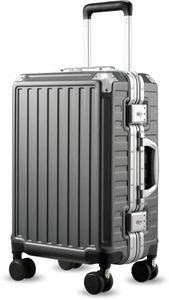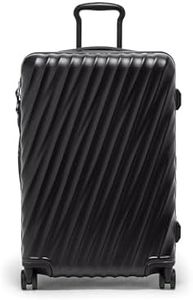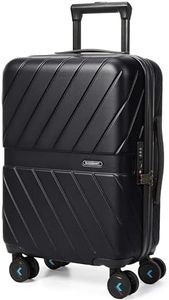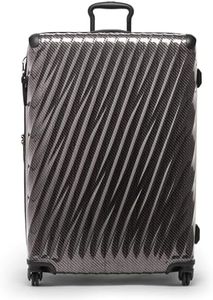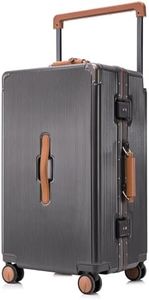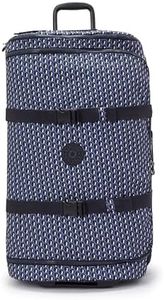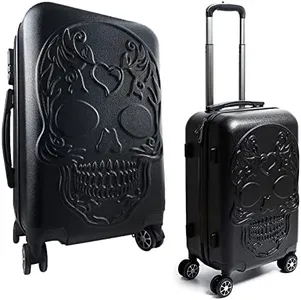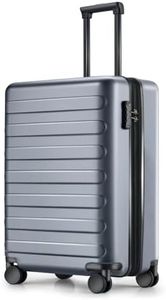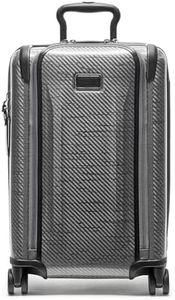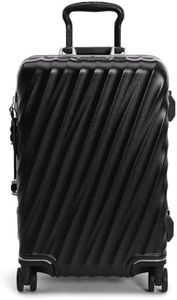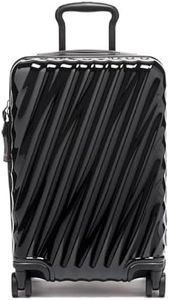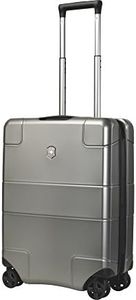10 Best Polycarbonate Luggages 2025 in the United States
Our technology thoroughly searches through the online shopping world, reviewing hundreds of sites. We then process and analyze this information, updating in real-time to bring you the latest top-rated products. This way, you always get the best and most current options available.

Our Top Picks
Winner
Carry On Luggage with Spinner Wheels, 8010S Aluminum Frame Zipperless Polycarbonate Hard Shell Suitcase (ZX-Core, Charcoal Metallic, 20 Inch)
Most important from
742 reviews
The LUGGEX Aluminum Frame Carry-On is a sturdy and stylish choice for travelers looking for durable polycarbonate luggage. It measures about 22 x 15 x 10 inches externally, fitting standard carry-on size limits, with a 36-liter capacity inside. Weighing 8.6 pounds, it’s a bit on the heavier side compared to some ultra-light carry-ons, but this comes with added protection. The hard shell is made of 100% polycarbonate combined with a one-piece aluminum frame and reinforced corners, which helps resist impacts and keeps belongings safer during rough handling.
The spinner wheels are designed with built-in springs for smoother, more stable rolling over different surfaces, which makes maneuvering easier and reduces vibration. Security-wise, it features an upgraded TSA-approved lock with a zipperless design to prevent jams and accidental openings, a thoughtful addition for hassle-free airport checks. The charcoal metallic finish gives it a modern, professional look that should appeal to many travelers. The suitcase also comes with a 3-year protection plan, showing the brand’s confidence in its durability.
If you prioritize strong build quality, smooth handling, and secure locks in a carry-on, this LUGGEX model is a solid pick. Those seeking a lighter or more compartmentalized option might want to compare other models.
Most important from
742 reviews
TUMI 19 Degree Frame Extended Trip 4 Wheel Packing Case - Lightweight Suitcase - Hard Shell Luggage - 30.0" X 20.5" X 11.0" - Black Texture
Most important from
27 reviews
The TUMI 19 Degree Frame Extended Trip 4 Wheel Packing Case is a solid choice for travelers needing a durable and stylish hard-shell suitcase. Made from polycarbonate, it offers good protection for your belongings while staying relatively lightweight at about 15.8 pounds for its large size (30 x 20.5 x 11 inches). This size is great for extended trips but may be too big for carry-on use. The suitcase features four smooth dual-spinning wheels that make maneuvering effortless in airports or hotels, paired with a sturdy 3-stage telescoping handle for comfortable handling. Inside, it has a well-organized interior with compression straps to keep clothes secure and neatly packed.
Security is well covered with a double-lock frame closure and two TSA-approved combination locks with a push-button opening, which enhances travel safety. A nice extra is the TUMI Tracer program designed to help locate lost luggage. The black textured finish gives it a sleek, professional look that suits both men and women. However, at nearly 16 pounds empty, it’s on the heavier side compared to some polycarbonate cases, which might be a consideration if you want to maximize packing weight limits.
The price and warranty (five years on most TUMI products) reflect its premium positioning. For those seeking a reliable, stylish hard-shell suitcase for longer trips with solid security and smooth handling, this TUMI model is a fitting choice, though lighter options exist if weight is your top priority.
Most important from
27 reviews
TUMI - 19 Degree Short Trip Expandable 4 Wheeled Packing Case - Hard Shell Suitcase - 26.0" X 17.5" X 10.0" - Textured Black
Most important from
24 reviews
The TUMI 19 Degree Short Trip Expandable 4 Wheeled Packing Case is a stylish option for those looking for a durable and elegant travel accessory. At 26 inches in height and with a total weight of 9 pounds, it offers a decent capacity of 50.5 liters, making it suitable for short trips or long weekends. The polycarbonate material ensures resilience and lightweight properties, which is essential for frequent travelers.
The suitcase features 4 spinner wheels that provide smooth and effortless navigation through airports and sidewalks. Additionally, the 3-stage telescoping handle adds convenience during transit. The integrated lock system enhances security, and the compression straps help keep belongings organized. The exterior, in textured black, offers a sleek and sophisticated look, along with the option for monogramming, adding a personalized touch. The TUMI Tracer helps locate the luggage in case of loss.
While it excels in aesthetics and ease of movement, its limited compartmentalization might be a drawback for those requiring more specific organization within the suitcase. This luggage piece is well-suited for individuals seeking a combination of style, durability, and convenience in their travels.
Most important from
24 reviews
Buying Guide for the Best Polycarbonate Luggages
When it comes to choosing polycarbonate luggage, it's important to consider several key specifications to ensure you get the best fit for your travel needs. Polycarbonate luggage is known for its durability, lightweight nature, and resistance to impact, making it a popular choice for travelers. Here are some key specs to consider and how to navigate them to find the right luggage for you.FAQ
Most Popular Categories Right Now


